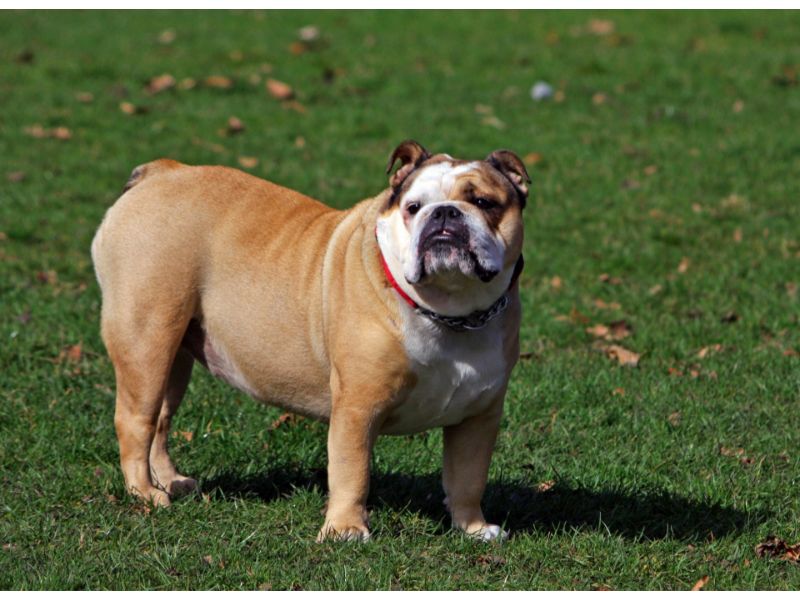The recommended size of a dog crate for a French Bulldog is 24 inches. This size provides enough space for the dog to stand, turn around, and lie down comfortably.
- Understanding The Importance Of A Properly Sized Crate
- Measuring Your French Bulldog For The Perfect Fit
- Factors To Consider When Selecting A Crate Size
- Recommended Crate Sizes For French Bulldogs
- Tips For Crate Training And Usage
- Frequently Asked Questions For What Size Dog Crate For French Bulldog
- Conclusion
French Bulldogs are small-sized dogs with a stocky build and a playful disposition. They need a safe and comfortable space where they can relax and retreat. A dog crate provides a secure environment for a French Bulldog and can aid in house training and creating a sense of routine.
Selecting the right size crate is essential to ensure the dog’s comfort and safety. A 24-inch crate is typically suitable for a French Bulldog, allowing them to move comfortably without feeling too confined. It’s crucial to remember that every dog is different, so closely observing your French Bulldog’s behavior and preferred resting positions can help determine the ideal crate size.
Understanding The Importance Of A Properly Sized Crate
Why A Correctly-sized Crate Is Essential For Your French Bulldog’s Well-being
A properly sized crate plays a crucial role in ensuring the well-being of your French Bulldog. Understanding the importance of selecting the right size crate is key to providing a safe and comfortable environment for your furry friend. In this section, we will explore why a correctly sized crate is essential for your French Bulldog’s overall comfort, security, and emotional well-being.
How A Crate Can Provide A Sense Of Security And Comfort For Your Pet
A crate serves as a den or sanctuary for your French Bulldog, simulating the natural instincts of a den-dwelling animal. By providing your furry friend with their own personal space, you are enabling them to feel safe and secure, just like they would in the wild. A properly sized crate can create a cozy and welcoming environment for your French Bulldog, ensuring they have a comfortable space that they can call their own.
A crate that is too small can make your French Bulldog feel cramped and restricted, leading to discomfort, anxiety, and potential behavioral issues. On the other hand, a crate that is too large may not provide the sense of security and coziness that your pet craves. It is crucial to find the perfect balance by selecting a crate size that allows your French Bulldog to stand up, turn around, and lie down with ease without excessive room to move around.
Providing A Safe Space
A crate not only provides comfort but also keeps your French Bulldog safe. By confining your pet to a correctly sized crate when you are unable to supervise them, you can prevent them from getting into potentially dangerous situations. Whether you are away from home or need to create a space for your French Bulldog to rest, a crate offers an effective solution to keep them secure and protected.
Moreover, a properly sized crate can aid in house training, as dogs have a natural instinct to keep their living space clean. By providing your French Bulldog with a crate that is proportionate to their size, you are encouraging them to maintain their crate as a clean and hygienic area, thus promoting good habits and making the process of housebreaking easier.
In conclusion, understanding the importance of a properly sized crate for your French Bulldog is crucial for their overall well-being. A crate provides a sense of security and comfort, creating a safe space where they can relax and recharge. By selecting the right size crate, you can ensure that your furry friend is content, happy, and well-adjusted, making the crate a valuable tool for both you and your French Bulldog.
Measuring Your French Bulldog For The Perfect Fit
When it comes to providing a comfortable and secure space for your French Bulldog, choosing the right size crate is crucial. Measuring your French Bulldog properly is the first step towards finding the perfect fit. By following a simple step-by-step guide, understanding the importance of measuring the length, height, and width, and considering various factors for a comfortable crate size, you can ensure that your furry friend has a cozy and safe space to relax in.
Step-by-step Guide To Measuring Your French Bulldog:
- Length: Start by measuring from the tip of their nose to the base of their tail. This is the overall length of your French Bulldog.
- Height: Measure from the ground up to the top of their head or ears, whichever is higher. This will give you the height measurement.
- Width: Measure the widest part of their body. This will determine the appropriate width for their crate.
Importance Of Measuring The Length, Height, And Width:
Measuring the length, height, and width of your French Bulldog is crucial to ensure that the crate is spacious enough for them to stand, turn around, and lie down comfortably. A crate that is too small can cause discomfort and restrict their movement, while a crate that is too large may lead to your furry friend feeling insecure due to excessive space.
By accurately measuring your French Bulldog, you can select a crate that provides just the right amount of room, creating a cozy den-like environment where they can feel safe and secure.
Factors To Consider For A Comfortable Crate Size:
While measuring your French Bulldog’s dimensions is important, there are other factors to consider as well to ensure a comfortable crate size:
- Breed Standards: French Bulldogs have their own breed standards, so it’s essential to take these into account when choosing a crate size to ensure their specific needs are met.
- Growth Potential: If you have a young French Bulldog, consider their growth potential. Choosing a crate that accommodates their estimated adult size will save you from having to purchase a new crate later on.
- Comfort: Allow for some extra space in the crate to accommodate a cozy bed or cushion, as French Bulldogs enjoy having a soft spot to rest on.
- Travel Plans: If you plan on using the crate for traveling, consider the size requirements of airlines or other modes of transportation to ensure your French Bulldog can accompany you comfortably.
By considering these factors and measuring your French Bulldog accurately, you can choose the perfect crate size that promotes their well-being and provides a secure and comfortable haven they can call their own.
Remember, a properly sized crate is an investment in your French Bulldog’s happiness and security, so make sure to take the time to measure them accurately and consider all the necessary factors before making your decision.
Factors To Consider When Selecting A Crate Size
When it comes to selecting a crate size for your French Bulldog, there are several factors you need to consider. Taking these factors into account will help you ensure that your furry friend is comfortable and safe in their crate. Let’s delve into these essential factors:
Age And Size Of Your French Bulldog
Your French Bulldog’s age and size play a crucial role in determining the crate size that will suit them best. As a puppy, your finchie will be smaller and will require a smaller crate. However, as they grow, their size will increase, and you’ll need to upgrade to a larger crate to accommodate their needs efficiently. It is important to anticipate their growth and invest in a crate with adjustable dividers, allowing you to modify the size as your Frenchie matures.
Activity Level And Mobility Requirements
Your Frenchie’s activity level and mobility requirements also factor into crate selection. If your Frenchie is highly active and loves to move around, a larger crate will give them the freedom they need. On the other hand, if they are more laid-back and prefer to relax, a slightly smaller crate may be suitable. Remember, the goal is to provide enough space for them to move comfortably but not too much space that they feel overwhelmed or insecure.
Considering Future Growth And Potential Crate Training Needs
Thinking ahead is crucial when selecting a crate size for your French Bulldog. Consider both their current size and future growth. It’s essential to select a crate that can accommodate their adult size, ensuring that you won’t need to invest in another crate down the line. Additionally, if you are planning to crate train your Frenchie, it is advisable to choose a crate size that allows them to stand, turn around, and lie down comfortably. Crate training is an essential aspect of your Frenchie’s development, promoting a sense of security and providing a designated space for rest. Investing in the right size crate from the start will make crate training smoother.
Recommended Crate Sizes For French Bulldogs
When it comes to crate training your French Bulldog, selecting the right size crate is essential. A well-fitted crate creates a safe and comfortable den-like environment for your furry friend. In this blog post, we will discuss the recommended crate sizes for French Bulldogs, including options for puppies, adult dogs, and those with specific health or behavioral needs.
Crate Sizes For A French Bulldog Puppy:
If you have a French Bulldog puppy, it’s vital to choose a crate size that allows for their growth. Selecting a crate that is too large may hinder their house-training progress as they might use one side for sleeping and the other for eliminating. To prevent this, consider the following crate sizes:
| Age of Puppy | Recommended Crate Size |
|---|---|
| 8-10 weeks | 18-22 inches (length) |
| 10-12 weeks | 22-24 inches (length) |
| 12-16 weeks | 24-30 inches (length) |
Ideal Crate Sizes For Adult French Bulldogs:
For adult French Bulldogs, you’ll want to ensure they have enough space to stand, turn around comfortably, and lie down. Choosing the right crate size is crucial for their comfort and well-being. Consider the following crate sizes for adult French Bulldogs:
- Small-sized French Bulldogs: 24-30 inches (length)
- Medium-sized French Bulldogs: 30-36 inches (length)
- Large-sized French Bulldogs: 36-42 inches (length)
Crate Options For French Bulldogs With Specific Health Or Behavioral Needs:
Some French Bulldogs may have specific health or behavioral needs that require a specialized crate. Here are some crate options to consider:
- French Bulldogs with separation anxiety: Look for a crate with a solid construction, a removable tray, and a calming bed or mat to help ease anxiety.
- French Bulldogs with arthritis or joint issues: Opt for a crate with extra padding, orthopedic bedding, and a low threshold for easy entry and exit.
- French Bulldogs with brachycephalic syndrome: Choose a crate with excellent ventilation and airflow to help regulate their body temperature.
- French Bulldogs with escape tendencies: Consider a crate with secure locks, reinforced construction, and a latch system to prevent escapes.
Remember, regardless of the crate size you choose, always make sure to gradually introduce your French Bulldog to their new crate and provide positive reinforcement to make it a comfortable and inviting space for them. Happy crate training!
Tips For Crate Training And Usage
Introducing your French Bulldog to the crate:
When crate training a French Bulldog, it is important to take a gradual approach to ensure a positive and stress-free experience. To successfully introduce your French Bulldog to the crate, follow these steps:
- Choose the right size crate: The first step is to ensure that you have the appropriate crate size for your French Bulldog. The crate should be big enough for your dog to stand up, turn around, and lie down comfortably, but not so big that they have excess space.
- Make the crate inviting: Place comfortable bedding and some of your French Bulldog’s favorite toys or treats inside the crate to create a positive association.
- Leave the crate door open: Initially, keep the crate door open and allow your French Bulldog to explore the crate at their own pace. Encourage them with praise and rewards when they enter the crate voluntarily.
- Start with short periods: Gradually increase the amount of time your French Bulldog spends in the crate. Begin with short intervals and gradually extend the duration. This allows them to acclimate to the crate slowly.
Crate Training Techniques For A Smooth Transition:
Crate training can be made easier with these effective techniques:
- Use positive reinforcement: Reward your French Bulldog with treats, praise, and petting whenever they enter the crate voluntarily or exhibit calm behavior while inside the crate.
- Establish a routine: Create a consistent schedule for crate time, including regular meals, playtime, and potty breaks. Dogs thrive on routine, and knowing what to expect can make crate training more successful.
- Ignore whining or barking: When your French Bulldog is in the crate, it’s common for them to whine or bark initially. However, it’s important not to give in to their demands or let them out of the crate immediately. Wait for a moment of calm before opening the door. This teaches them that whining or barking won’t lead to an immediate release from the crate.
- Gradual crate confinement: Once your French Bulldog is comfortable spending short periods of time in the crate, you can start gradually confining them for longer periods. Begin by staying nearby and gradually increase your distance from the crate.
Dos And Don’ts Of Using A Dog Crate For French Bulldogs:
When utilizing a dog crate for your French Bulldog, keep these dos and don’ts in mind:
| Do | Don’t |
|---|---|
| Do make the crate a positive and comfortable space by making it appealing with bedding and toys. | Don’t use the crate as a form of punishment or confinement for long periods. |
| Do gradually increase the duration of crate time, allowing your French Bulldog to become comfortable and relaxed. | Don’t rush the process and force your French Bulldog into the crate. |
| Do encourage your French Bulldog to enter the crate willingly using treats and positive reinforcement. | Don’t force or physically push your dog into the crate as this can create negative associations. |
| Do establish a consistent routine for crate time, including regular meals, playtime, and potty breaks. | Don’t leave your French Bulldog confined in the crate for extended periods without breaks. |
By following these tips, you can ensure a smooth and positive crate training experience for your French Bulldog. Remember to be patient and consistent, and your furry friend will soon view their crate as a safe and comfortable space.
Frequently Asked Questions For What Size Dog Crate For French Bulldog
What Is The Ideal Crate Size For A French Bulldog?
The ideal crate size for a French Bulldog is one that allows them to stand up, turn around, and lie down comfortably. A crate that is approximately 24 to 30 inches in length is suitable for most French Bulldogs. It’s important to choose a crate that is not too small or too large for your Frenchie, as this can affect their comfort and safety.
Can I Use A Crate That Is Slightly Larger For My French Bulldog?
While it’s important to provide enough space for your French Bulldog to move around comfortably, using a crate that is excessively larger than necessary may not be ideal. French Bulldogs generally feel more secure in a cozy and enclosed space.
Using a slightly larger crate may make it harder for them to feel safe and can potentially lead to accidents inside the crate.
Are There Specific Crate Features That Are Important For French Bulldogs?
Yes, there are certain crate features that are important for French Bulldogs. Look for a crate with good ventilation to ensure proper airflow. A crate with secure latches is essential to prevent your Frenchie from accidentally escaping. Additionally, a crate with a removable tray makes cleaning up accidents or spills easier.
Choose a crate with rounded corners to avoid any injuries.
Should I Consider The Weight And Height Of My French Bulldog When Selecting A Crate?
Yes, considering the weight and height of your French Bulldog is essential when selecting a crate. French Bulldogs are generally small in size, so ensure that the crate is appropriate for your Frenchie’s weight and height. Choosing a crate that is too small will be uncomfortable for your Frenchie, while selecting one that is too large may not provide a sense of security.
Conclusion
To ensure the comfort and safety of your French Bulldog, choosing the right size dog crate is crucial. By providing them with a crate that is spacious enough for them to stand, turn around, and lie down comfortably, you create a peaceful and secure environment.
Consider their adult size and growth potential when selecting the crate dimensions. Remember, a suitable crate will promote positive behavior and aid in housetraining. So, invest in the appropriate size dog crate for your furry friend’s well-being and overall happiness.




